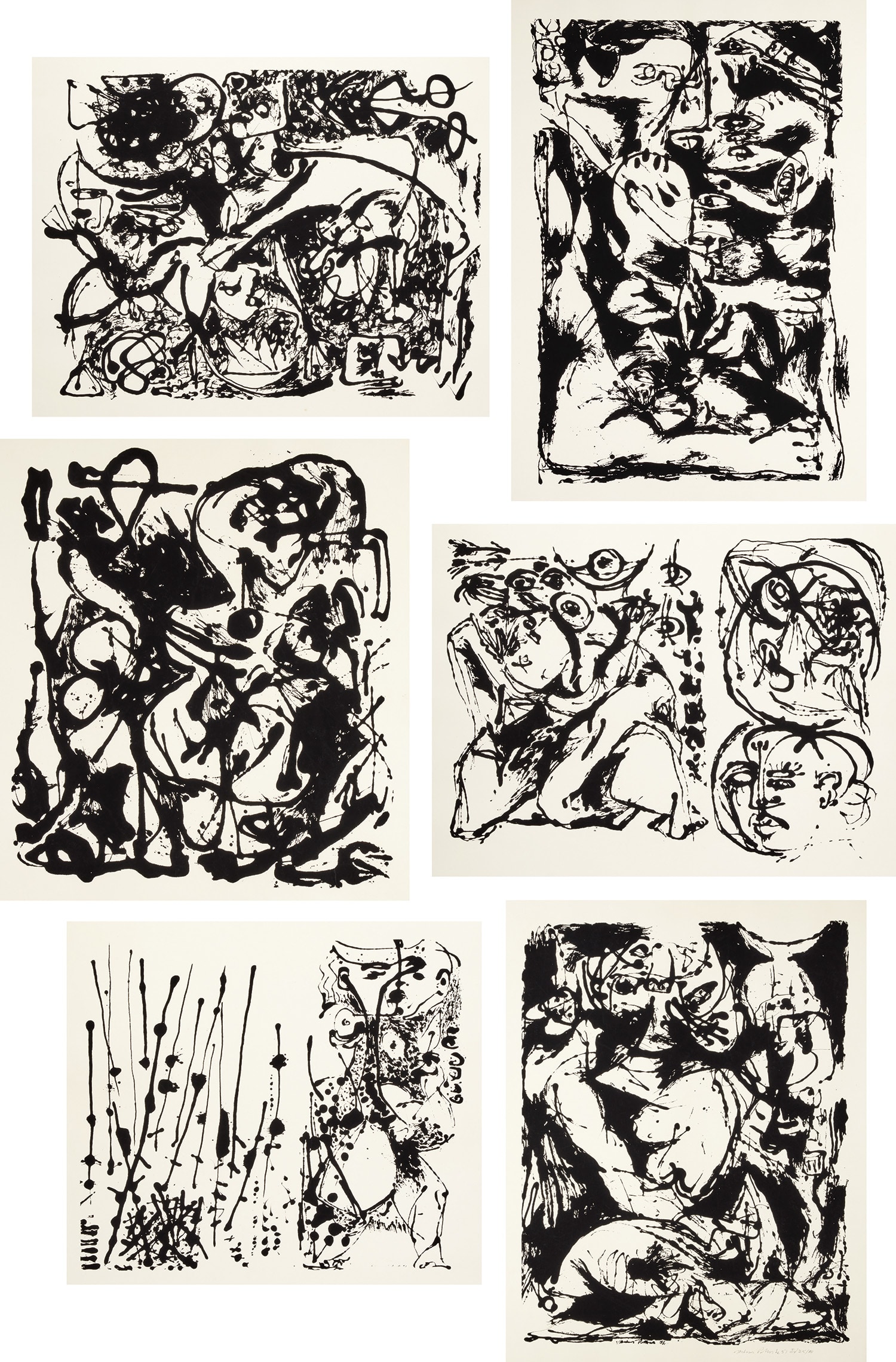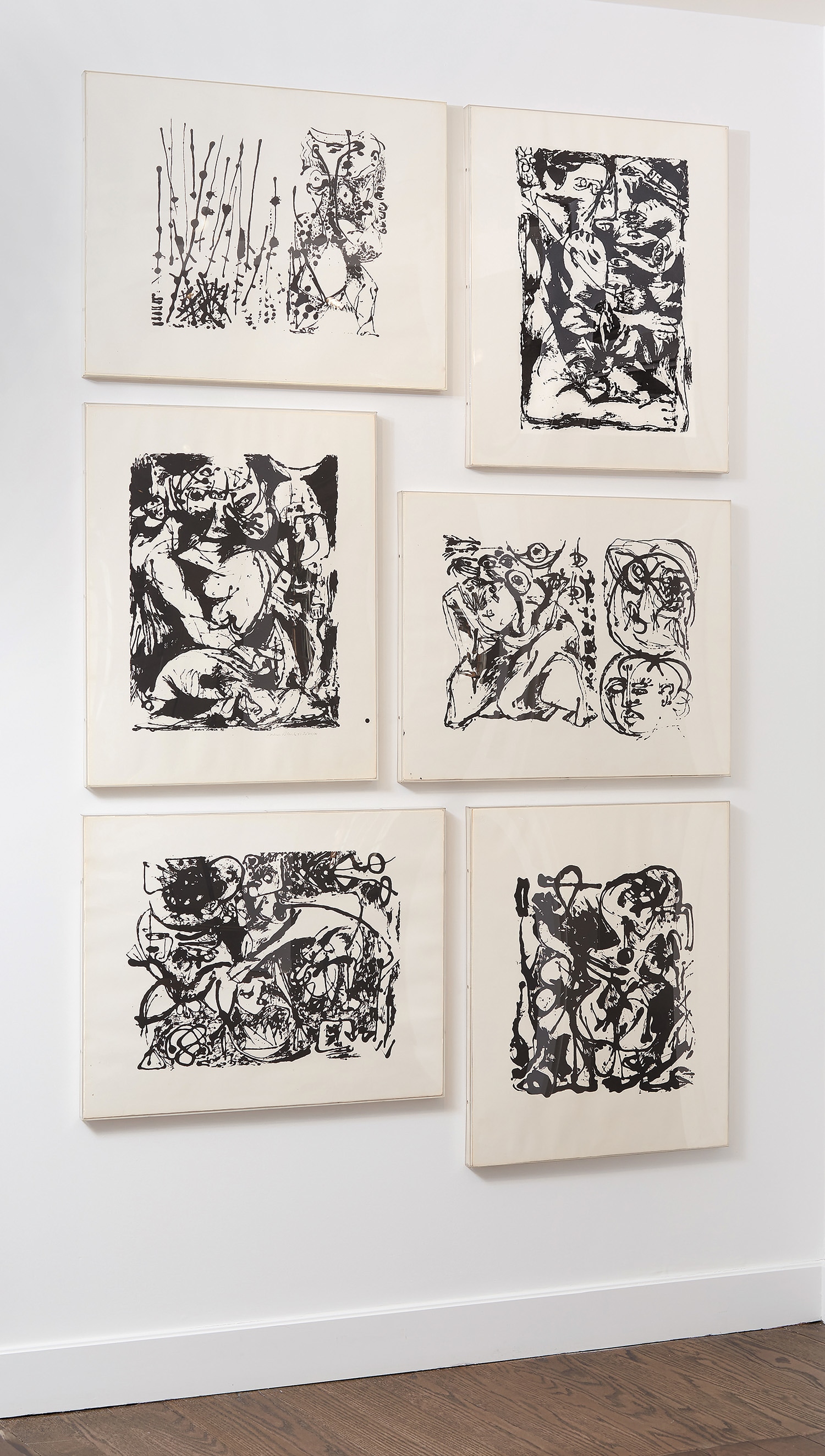



Property from the Estate of Howard Mendes, New York City
25
Jackson Pollock
Untitled Portfolio (O'C. & T. 1091-1096)
1951
The rare, complete set of six lifetime screenprints, each on two sheets of Strathmore paper glued together, as issued, all with blindstamps, with full margins.
approximately (5) I. 17 x 22 in. (43.2 x 55.9 cm)
(1) I. 19 x 17 in. (48.3 x 43.2 cm)
all (three vertical) S. 23 x 29 in. (58.4 x 73.7 cm)
(1) I. 19 x 17 in. (48.3 x 43.2 cm)
all (three vertical) S. 23 x 29 in. (58.4 x 73.7 cm)
Untitled (after Number 22, 1951) signed, dated ’51 and numbered ‘Ed 25/14’ in black ink, all from the edition of about 25 printed in 1951 (there was also a numbered edition of 50 printed posthumously in 1964 by Lee Krasner and the Pollock Estate), printed by the artist and his brother, Sanford McCoy, Deep River, Connecticut, all framed.
titles: Untitled (after Number 7, 1951); Untitled (after Number 8 - Black Flowing, 1951); Untitled (after Number 9, 1951); Untitled (after Number 19, 1951); Untitled (after Number 22, 1951); and Untitled (after Number 27, 1951)
titles: Untitled (after Number 7, 1951); Untitled (after Number 8 - Black Flowing, 1951); Untitled (after Number 9, 1951); Untitled (after Number 19, 1951); Untitled (after Number 22, 1951); and Untitled (after Number 27, 1951)